We present to you a helpful updated example of the Apple PESTEL analysis so you can better understand the relevance and uses of the PESTEL framework. Let’s go!
Apple overview:
Apple has become one of the world’s largest and most successful American companies. It focuses on creating and promoting cutting-edge software, tablets, smartphones, and desktops.
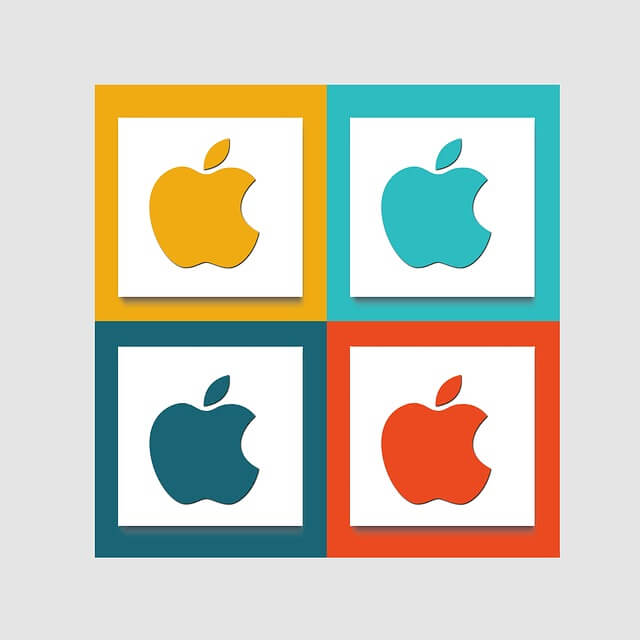
The Apple corporation, often known as the Apple brand, has grown and developed significantly since its founding in 1976 due to enormous investments in cutting-edge technologies.
Let’s dive into the Apple macro environment analysis!
PESTEL analysis of Apple
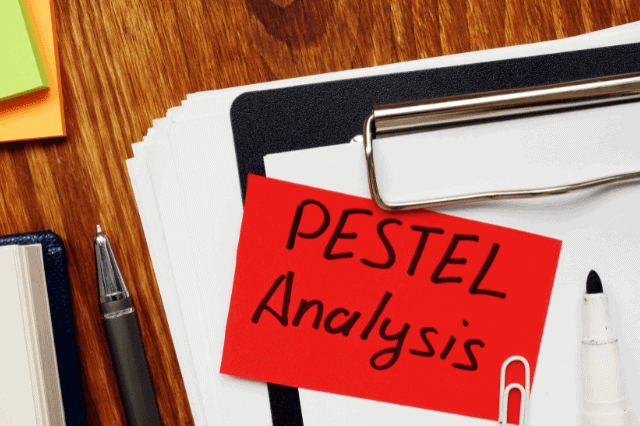
We learned the following information about Apple and its international environment from our literature study on the company and the market for new technologies.
Let’s dive into the details of the PESTEL analysis of Apple in 2022:
Political factors
China is the world’s factory, and the American brand Apple is no exception. As a result of the political and economic war between China and the United States, the U.S. government has set high taxes on imports from China, which has increased the overall cost of imported Apple products.
Current and future political conflicts between these two big countries may negatively impact Apple’s margins and business performance. Note that many of Apple’s sales come from the Chinese market!
Otherwise, Europe also has conflicting relations with some large companies in taxation, especially with the GAFA (Google, Amazon, Facebook, and Apple).
This is a severe threat to the Apple brand because it could face obstacles to marketing and distribution in the countries of the European Union.
Thus, Apple depends to a large extent on free trade agreements for products and goods. The North American Free Trade Agreement (NAFTA), the European Union Free Trade Agreement (EUFTA), the Southern Common Market (MERCOSUR), and the Asia-Pacific Economic Cooperation (APEC) are essential to Apple’s international development.
Any changes to these agreements and political upheaval will impact Apple’s business performance either positively or negatively.
Economic factors
Let’s start with the threats to Apple’s global economic environment!
An economic crisis now marks the global economic environment due to the negative impacts of the Covid-19 health crisis on the purchasing power of consumers and the economic growth of companies and countries.
Almost all companies have been impacted by the harmful effects of this global economic crisis. And Apple is no exception.
At the onset of the health crisis, these companies saw their sales and profits decline due to the confinement of populations, mass layoffs of employees, and rapidly increasing unemployment.
Thus, Apple’s financial and economic performance is impacted by fluctuations in the exchange rates of major currencies worldwide. Let’s never forget that the Apple brand is present worldwide.
Finally, the global market of new digital technologies is marked by an increasingly high competitive intensity. Being the number one company in the world is not easy, but staying on top for a long time is even more difficult.
Apple’s various products face fierce competition, especially from Chinese and Korean companies (Samsung, Sony, and Huawei).
Regarding opportunities in the current global economic environment, we must emphasize the significant growth potential in developing countries such as Brazil, India, Pakistan, and Turkey.
Indeed, the purchasing power of consumers in emerging countries continues to increase, which has positively impacted the demand for electronic products, including computers, tablets, and smartphones.
Last but not least, the development of smartphone and laptop sales worldwide has created ample opportunity for Apple in the containment and extension of telecommuting.
Social factors of Apple
As a result of our investigation of the socio-cultural environment, we have identified many opportunities and threats for Apple.
Today’s computer and other mobile device users are increasingly young. As a result, computers and digital tools have become a must-have.
The characteristics of Generation Z, also called digital natives, represent a considerable growth potential for the Apple brand. It is an ultra-connected generation!
However, Generation Z is very demanding and zealous, constantly looking for innovative solutions and new experiences. So, this can be a potential threat to the sustainability of Apple company.
Also, we must note that the positive effects of globalization have led to the standardization of consumer habits and lifestyles of the global consumer.
Everyone wants to have a smartphone, a laptop, and a smartwatch!

Another huge opportunity lies in the constant desire of consumers to equip themselves with electronic products. We are seeing an increased global consumer appetite for innovative electronic products: intelligent cars and smart appliances. Etc.
Thus, Apple can easily convince consumers of the added value of these innovative products.
Technological factors
Like social factors, technological factors always positively influence the activities and performance of the Apple brand.
The growing use and rapid evolution of computers are vital elements in the development of the American company.
The Apple market is characterized by rapid technological advancement. In the world of new technologies, technological acceleration represents an excellent opportunity for companies wishing to make the most of technology.
Apple is an excellent example of this with its innovative products. In short, Apple operates in a market where innovation is widespread and rapid.
It can be both a threat if the company misses a significant innovation and also a great opportunity if, on the contrary, it is at the origin of this innovation.
Environmental factors
Today, all businesses must comply with the regulations and guidelines set by governments and NGOs addressing ecology and the environment. Apple is not exempt from these strict regulatory requirements, which sometimes harm businesses’ economic success.
Internal Apple sources claim that Apple is dedicated to using as much renewable energy as possible in its buildings and data centers and that the company is constantly working to lower its carbon footprint
Legal factors
Due to Apple’s presence in worldwide markets, company management has to consider the rules and regulations of each country that Apple is targeting.
New consumer data and information protection rules, particularly in European countries, also apply to American brands.
Let’s now discuss the negative consequences of counterfeiting. In fact, the reputation of the Apple brand suffers significantly due to the fraudulent use of the brand image to market fake goods.
Because most emerging countries neglect intellectual property and industrial property laws, many users consider the counterfeit device a poor-quality product manufactured by Apple.
Due to the rising importance of user privacy, the increasing smartphone tracking poses a possible severe risk to smartphone manufacturers like Apple.
Therefore, businesses that don’t conduct appropriately and sincerely risk declining their brand image.
Apple could control the tracking that programs do with users thanks to the iOS 14.5 update released this year. We may conclude that by meeting the needs of its customers, the Apple brand was able to take advantage of this potential threat.
We should also notice the rise in class action lawsuits against Apple recently. These acts negatively impact the company’s sales, reputation, and brand image.
Apple Pestel Analysis Summary
To summarize the results of the Apple Pestel analysis, we present the significant opportunities and threats related to Tesla’s macro environment.
| Component | Opportunities | Threats |
| Political |
|
|
| Economic |
|
|
| Social |
|
|
| Technological |
|
|
| Ecological |
|
|
| Legal |
|
|
Pestel Analysis of Apple PDF
Many readers, and especially students, have contacted us recently for a copy of the Apple Pestel analysis in pdf format.
Click here to download your copy of the Apple Pestel Analysis pdf.
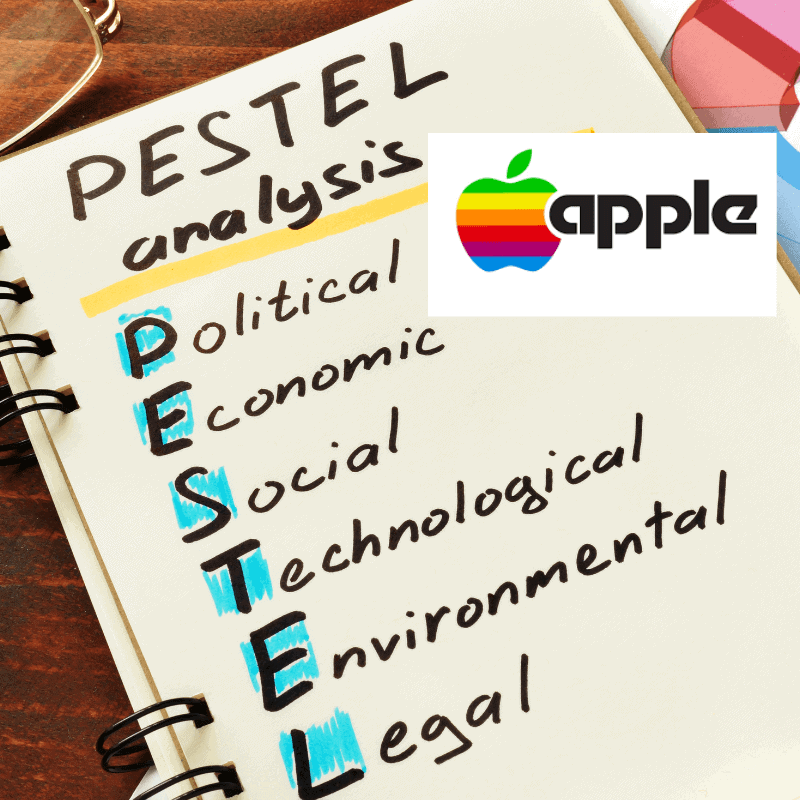
FAQ about Pestel Analysis
What is a PESTEL Analysis?
The PESTEL analysis, also known as the PEST, allows you to study your company’s global environment in order to make relevant business decisions.
PESTEL is an external strategic analysis framework or tool that allows you to identify and evaluate your company’s macro-environment opportunities and threats.
PESTEL is the acronym for six primary components of the broad environment of a market: Political, Economic, Sociological (socio-cultural), Technological, Ecological (environmental), and Legal.
The main goal of this analysis is to anticipate changes in the company’s environment and to adapt to the different elements of the macro-environment of an industry.
We often distinguish the micro-environment from the macro-environment of a company or a market.
To study the micro-environment of your company in depth, the most famous tool by strategic management experts remains the PORTER 5 forces model.
As for the study of the macro-environment, company managers often use the PESTEL model. And to summarise the results of the strategic analysis, we often use the famous SWOT model.
What are Pestel factors?
The PESTEL framework is based on an in-depth analysis that is structured around six factors represented by a letter, each forming the acronym of the technique:
- Political factors;
- Economic factors ;
- Sociocultural or Sociological factors ;
- Technological factors;
- Ecological or Environmental factors;
- Legal factors.
What is Pestel analysis used for?
In other words, how to use Pestel framework? Here are the primary uses of the Pestel analysis:
Market research: Market research experts often advise companies to start with a documentary study to collect broad information about a market before moving on to the field survey.
When discovering a new market for the company, the Pestel framework becomes more relevant and valuable.
Example: Australian market study for a British brand willing to expand into Australia. Quantitative and qualitative market research is very costly for companies.
The managers of this British brand will then start with a documentary study always less expensive, to get a general idea of the potential and risks of the Australian market before moving on to in-depth studies. To achieve this , the top-rated tool used by marketers is always the Pestel framework in order to summarize the results of the documentary study.
Marketing plan update: at the end of each year, marketers often review their annual marketing plan based on changes in the market. To do this update, marketers often use the Pestel analysis template.
Evaluation of a new project: Within the feasibility studies framework, project leaders must carry out documentary studies. They should include the results of these studies in the business plan of their projects.
Strategic planning: the strategic analysis step is the first step of the strategic planning process. This phase is divided into two parts: internal and external strategic diagnosis.
The PESTEL analysis is an essential tool for external strategic analysis. The PESTEL tool allows you to analyze the macro-environment of your company to identify and analyze current and potential opportunities and threats.
How to do a Pestel analysis?
To conduct a successful Pestel analysis, you have to follow these five main steps:
| Step one | define the goals of the PESTEL analysis. For example, our goal is to measure the attractiveness of the Canadian market before conducting quantitative or qualitative market research. |
| Step two | set up a multidisciplinary working group. Implementing the PESTEL framework requires a minimum of expertise and versatility to collect relevant information on each macro-environment factor. |
| Step three | collect relevant data on each factor of the global market environment. Try to consult all reliable sources: newspapers, the company website, social media, industry reports, information on competitors, laws, and regulations related to the company’s industry. |
| Step four | Based on the data collected, identify and measure each factor’s positive or negative influencing elements. In other words, determine the opportunities and threats of each aspect. Then, identify the trends and perspectives of the market. The ultimate purpose of the Pestel model is this. |
| Step five | make relevant decisions, sometimes immediately, to adapt, or even anticipate, the current and future trends of the industry’s macro-environment. |
How Pestel analysis is useful to organizations?
The popularity of Pestel analysis is due to its multiple benefits for organizations. Here are the main advantages of the Pestel framework:
- The Pestel analysis is a simple tool to implement;
- It is a relevant and efficient framework: it allows you to identify all the macro-environment factors that can influence a market’s performance.
- Better understand the trends of your market;
- Helps managers make the right strategic decisions and develop the best strategies for their companies;
- Better take advantage of the opportunities in your environment;
- Avoid current and potential threats in your industry.
What is the difference between SWOT and Pestel analysis?
Pestel and SWOT are two completely different strategic analysis tools. The Pestel framework is used to analyze the macro environment of a company.
On the other hand, the SWOT template is a synthesis tool and allows you to summarize the main results of your internal and external strategic analysis. Therefore, you cannot do the SWOT analysis before doing the Pestel analysis.
Finally, SWOT and Pestel are viral strategic analysis tools in academic communities and are widely used by managers and experts in strategic management.
What is Pestel in marketing?
The Pestel model is a multipurpose tool. The marketing departments of companies also use it.
Market research departments are required to conduct market research on a regular schedule to discover and adapt to new market trends.
For this reason, marketers always use the Pestel model to understand better the macro environment in which their companies operate.
In market research, marketers often conduct documentary research before moving on to in-depth market research (quantitative and qualitative research).
The Pestel analysis is the most used tool to achieve the documentary study.
What is Pestel framework?
Pestel framework, Pestel analysis, or even Pestel model mean the same thing. PESTEL framework is a top-rated tool for external strategic diagnosis and is one of the essential methods for conducting in-depth research of a company’s macro-environment.
Is it pestel or pestle analysis?
The only difference between PESTLE and PESTEL analysis is the order of the last two letters. Depending on the researcher’s preferences, either can be used instead of the other.
Don’t panic if you search for a specific PESTLE analysis, all you see are articles with “PESTEL” in the title. There isn’t any difference between the two.
Conclusion
Through Apple’s case study Pestel example, we have tried to show you the different opportunities and threats related to the macro environment of the Apple company.
If you want to master the Pestel model, try using our Pestel framework Apple example to help you develop the Pestel model for other companies.
The Pestel analysis is a relevant tool to diagnose your company’s macro environment. It helps managers to make good decisions related to the strategic choices of their companies through the anticipation of current and potential market opportunities and threats.
However, the Pestel model alone can not analyze well your company’s environment and performance. We recommend you use other strategic analysis tools and frameworks, such as Porter’s Five Competitive Forces model, the VRIO model, and the SWOT analysis.
To help us produce quality content, please share this Apple, inc. Pestel analysis on social media and with your friends.
PESTEL analysis examples 2024
To better understand the PESTEL analysis, we invite you to read our recent free examples of the Pestel framework.
PESTEL analysis of Zara
Click here to read our example of Zara’s PESTEL analysis.
PESTEL analysis of DHL
Click here to read our example of DHL’s PESTEL analysis.
PESTEL analysis of FedEx
Click here to read our example of FedEx’s PESTEL analysis.
PESTEL analysis of Chipotle
Click here to read our example of Chipotle’s PESTEL analysis.
PESTEL analysis of Brazil
Click here to read our example of Pestel’s analysis of Brazil.
PESTEL analysis of Spotify
Click here to read our example of Spotify Pestel analysis.
Chick-fil-A PESTEL Analysis
Click here to read our example of Chick-fil-A Pestel analysis.
Costco PESTEL Analysis
Click here to read our example of Costco Pestel analysis.
Microsoft PESTEL Analysis
Click here to read our example of Microsoft Pestel analysis.
Disney PESTEL Analysis
Click here to read our example of Disney Pestel analysis.
Airline Industry PESTEL Analysis
Click here to read our example of the Airline industry Pestel analysis.
Walmart Pestel Analysis
Click here to read our example of Walmart Pestel analysis.
Amazon Pestel Analysis
Click here to read our example of Amazon Pestel analysis.
McDonald’s Pestel Analysis
Click here to read our example of the Netflix Pestel analysis.
Netflix Pestel Analysis
Click here to read our example of the Netflix Pestel analysis.
Twitter Pestel Analysis
Click here to read our example of the Twitter Pestel analysis.
Facebook Pestel Analysis
Click here to read our example of the Facebook Pestel analysis.
Pestel analysis of the Social Media industry
Click here to read our example of the Pestel analysis of the Social Media industry.
Ikea Pestel Analysis
Click here to read our example of the IKEA Pestel analysis.
Tesla Pestel Analysis
Click here to read our example of the TESLA Pestel analysis.

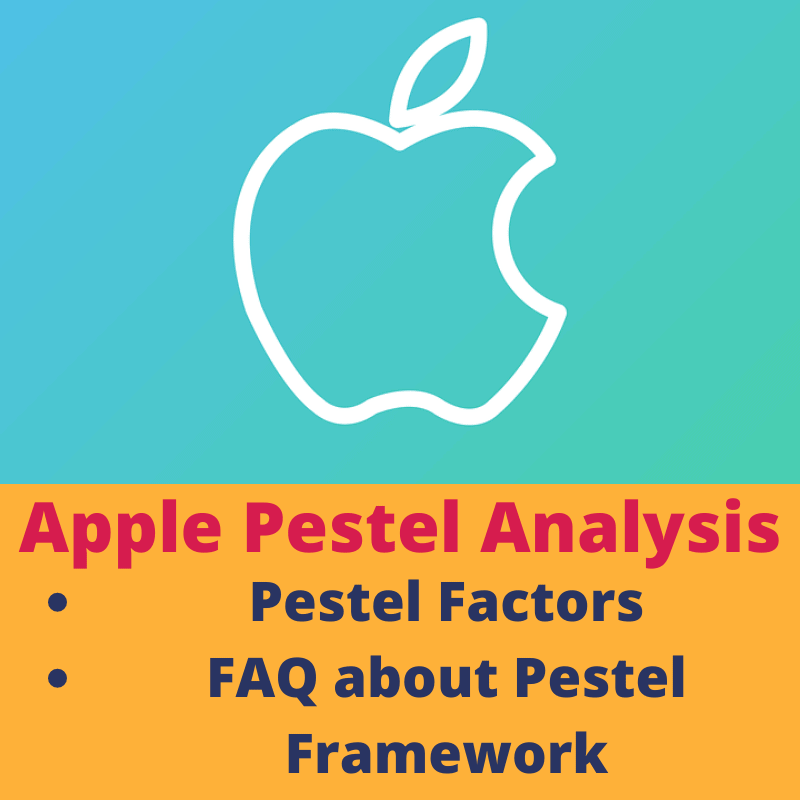
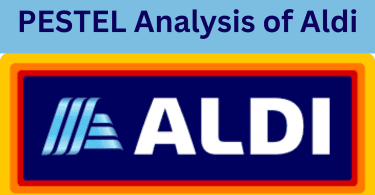
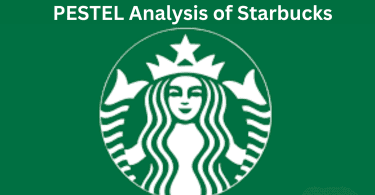
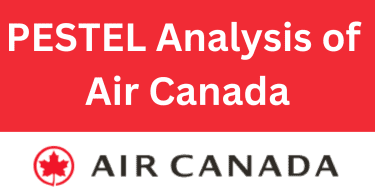
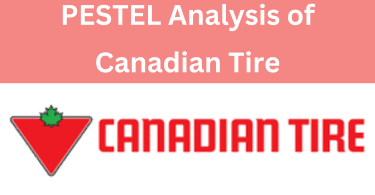


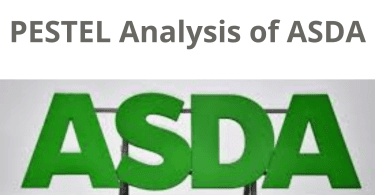
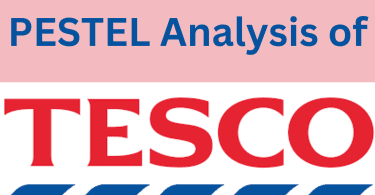
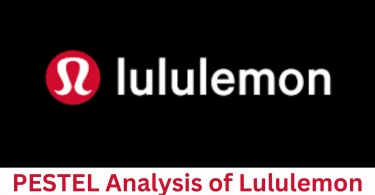
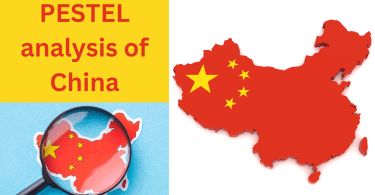
Leave a Comment